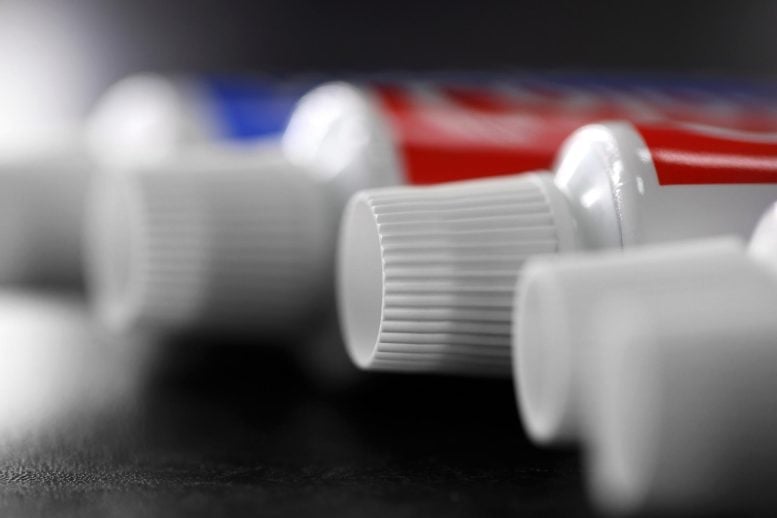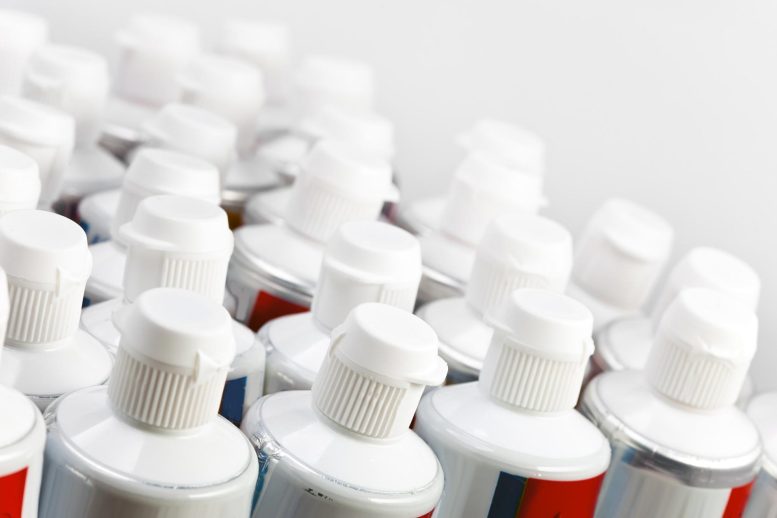
Some of the ingredients in popular toothpaste may not be healthy.
Do you use toothpaste every day? Of course, you do! But do you know what’s in that minty tube of tooth gel? Here’s the reality. Some ingredients in common, everyday products have not been thoroughly tested.
Since toothpaste is a staple on your bathroom counter, it’s important to know what you’re putting in your mouth, since you use it so often. This is especially true if you have children, since children are more likely to swallow toothpaste.
So, when you buy toothpaste, what ingredients should you avoid?
Artificial Dyes
The dyes in toothpaste make the toothpaste you put on your toothbrush look colorful, but that doesn’t make them healthy. Some dyes are derived from petroleum or coal tar, ingredients linked with certain types of cancer. Who knows what the health risks are if you swallow small amounts every day? Why take the chance when there are toothpastes that contain no artificial dyes or colorings?
To avoid artificial dyes, look for natural colors, such as beetroot juice powder or turmeric powder, instead of using these chemicals. To find out if your toothpaste contains artificial dyes, check the ingredient list for these common names: FD&C or D&C followed by a color and number (e.g., FD&C Red No. 40), Blue 1 and 2, Green 3, Orange B, Citrus Red 2, Violet 2). Fortunately, there are toothpastes that don’t contain these colorings available online and in some natural food markets and health food stores.

Some toothpaste contains artificial colorings. While they may make the toothpaste look prettier, it may not be the healthy choice.
Diethanolamine (DEA)
Diethanolamine (DEA) is a chemical used in many products, including toothpaste. It is a petrochemical derivative that is sometimes added to products as a surfactant, emulsifier, foaming agent, and thickener. It’s also in cosmetics, shampoos, and soaps. In toothpaste, it helps prevent tartar buildup and reduces plaque, but it has some downsides.
The American Dental Association (ADA) also suggests avoiding toothpaste containing DEA, because it can react with other ingredients to form nitrosamines, which are toxic to humans. It’s possible that diethanolamine (DEA) may have carcinogenic effects and cause allergic reactions, particularly in people with certain health conditions. Plus, there are concerns that it’s a hormone disruptor.
Sodium Laurel Sulfate (SLS)
Sodium lauryl sulfate (SLS) is a surfactant, which is a compound that helps water and oil mix. It’s also used as a foaming agent in some personal care products, including toothpaste, shampoo, and soap.
SLS has been the focus of many studies that have linked it to skin irritation and other health problems — but it’s still considered safe by the FDA, because no scientific study has clearly found that SLS causes cancer or other serious illnesses. However, these two ingredients have been linked to canker sores and other mouth irritations, so it’s best to avoid them if you can.

You have many different options when buying toothpaste, so look for ones that do not have potentially unhealthy ingredients.
Triclosan
Triclosan is an antibacterial and antifungal agent that was once a common additive to toothpaste. It’s also a hormone disruptor and a registered pesticide that causes infertility and other issues in animals.
There’s also evidence that triclosan disrupts the gut microbiome, the healthy bacteria that live in your gut and help maintain balance. The Food and Drug Administration banned triclosan in antibacterial soaps in 2016 and in toothpaste in 2019. However, if you stocked up on toothpaste and still have older tubes lying around, they may contain triclosan.
There’s another reason to avoid triclosan. According to the American Dental Association (ADA), triclosan can cause inflammation of the gums and tongue, and alter your mouth’s pH level, which will lead to increased sensitivity and dryness.
Titanium oxide
Titanium dioxide is a common ingredient in toothpaste. It’s used to whiten teeth and reduce tartar build-up, but it can also irritate your teeth and gums. It’s also an ingredient in sunscreen and paint.
If you have sensitive teeth, avoid products that contain titanium dioxide, also known as titania. Although there’s no evidence that small amounts of titanium dioxide cause harm, there’s some debate over how safe it is. It’s most problematic if you have sensitive teeth.
Artificial Sweeteners
Although a strong link between artificial sweeteners and cancer has not been proven, studies suggest artificial sweeteners may disrupt the gut microbiome. So even though they may make toothpaste taste nice, it’s best to avoid them in foods and toothpaste.
Conclusion
There are many brands that use questionable ingredients. And while you may think, “But I brush my teeth so quickly, how could these really impact me?” The reality is that if you brush every day with a toothpaste containing questionable ingredients, it could harm your health, and there are concerns about children using them too. There are plenty of natural products that can have the same cleaning effects as their chemical counterparts. So next time you shop for toothpaste, read those labels and pick one with only safe ingredients!
References:
- “Artificial Sweeteners Study – Medical College of Wisconsin.” 26 Jun. 2019, .mcw.edu/newsroom/news-articles/artificial-sweeteners-study.
- Yueh MF, Tukey RH. Triclosan: A Widespread Environmental Toxicant with Many Biological Effects. Annu Rev Pharmacol Toxicol. 2016;56:251-72. doi: 10.1146/annurev-pharmtox-010715-103417. PMID: 26738475; PMCID: PMC4774862.
- “Coal Tar and Coal-Tar Pitch – Cancer-Causing Substances – NCI.” .cancer.gov/about-cancer/causes-prevention/risk/substances/coal-tar.
- CampaignforSafeCosmetics.org. “Nitrosamines”
"ingredients" - Google News
June 11, 2022 at 08:13PM
https://ift.tt/2jZzpqR
6 Ingredients in Toothpaste to Avoid - SciTechDaily
"ingredients" - Google News
https://ift.tt/4iUf2S1
Shoes Man Tutorial
Pos News Update
Meme Update
Korean Entertainment News
Japan News Update
Bagikan Berita Ini














0 Response to "6 Ingredients in Toothpaste to Avoid - SciTechDaily"
Post a Comment